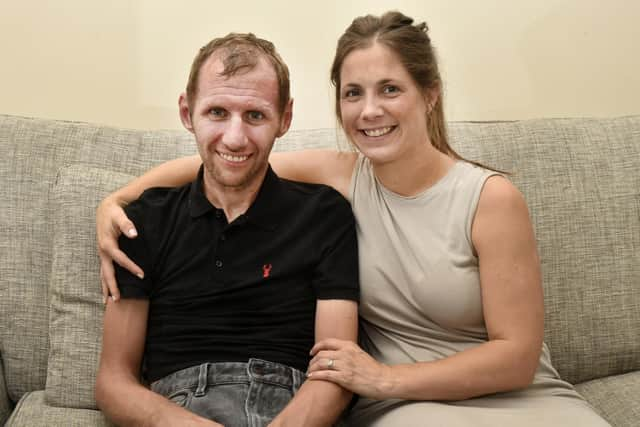What is MND? Motor Neurone Disease explained as Rob Burrow continues fight
There is no cure for the condition, but treatments can help reduce its impact on a person’s daily life. It is caused by a build-up of certain proteins in the brain that clump together, causing the cells to gradually stop working.
Symptoms include impaired movement, thinking and breathing, which worsens over time.It attacks the nerves that control movement so muscles no longer work. MND does not usually affect the senses such as sight, hearing and touch.
Advertisement
Hide AdAdvertisement
Hide AdMore than 80 per cent of people with MND experience changes to their speech, which may become slurred or quieter. Some people lose their ability to speak entirely. It affects people from all backgrounds.


It kills a third of people within a year and more than half within two years of diagnosis. A person’s lifetime risk of developing MND is around one in 300.
Six people per day are diagnosed with MND in the UK. It affects more than 5,000 adults in the UK at any one time. But there is valuable work under way. The “aptamer” lab test works by identifying abnormal protein clumps in a brain tissue sample taken from a patient during biopsy.
Dr Brian Dickie, director of research at the Motor Neurone Disease Association, said: “It often takes a year from the first onset of symptoms to receiving a diagnosis of MND.”
Advertisement
Hide AdAdvertisement
Hide AdBut he said “innovative research” into the early cellular changes occurring in MND offers exciting potential for the development of new tests to help reduce diagnostic delay.
He said: “As treatment does not begin until the disease is diagnosed, earlier intervention will hopefully also mean that treatments are more effective.”
He was speaking after it was revealed that a test that spots signs of motor neurone disease before symptoms appear has been hailed a “game changer” by scientists developing it.
The TDP-43 aptamer tool is able to detect damaged cell proteins in brain tissue samples.
Advertisement
Hide AdAdvertisement
Hide AdResearchers said these proteins are indicators, or biomarkers, of MND that can be spotted before cells begin to malfunction and symptoms start to appear.
They said that detecting the condition at its earliest stages opened the door for more effective treatments.
Dr Holly Spence, from the University of Aberdeen, said: “Our findings have implications for early diagnostics and intervention prior to symptom onset in MND.
“With better ability to detect disease, we might be able to diagnose people with MND earlier, when therapeutic drugs might be much more effective.”
Advertisement
Hide AdAdvertisement
Hide AdThe MND Association is a membership organisation with more than 10,000 members forming a powerful national and local network that provides information and support.
Comment Guidelines
National World encourages reader discussion on our stories. User feedback, insights and back-and-forth exchanges add a rich layer of context to reporting. Please review our Community Guidelines before commenting.